Intro
VOYAGER Next, the latest generation of HARMAN’s award-winning Voyager consumer platform for small vehicles, debuts as the industry’s first all-in-one audio and connected car Head Unit solution designed to meet the needs of today’s ‘on-the-go’ lifestyle. Designed specifically with the next-generation of millennial consumers in mind, Voyager Next combines HARMAN’s industry leading premium audio and connected car technologies into one tailored solution, adding innovative application, loudspeaker and subwoofer solutions, providing an experience that meets their expectations for great audio quality while connecting them to their daily lives.
VOYAGER Next provides consumers with new levels of intelligent personalization and sound quality, including:
• Customizable soundstage and in-car lighting: A VOYAGER Next companion app—mirrored and controlled by the Head Unit using SmartDeviceLink technology—allows users to seamlessly customize an in-car listening and lighting experience, recreating their choice of listening environments from the studio to the stadium.
• Big sound in a small space: Super thin and micro-sizeable, every KiNETiC array consists of a scalable number of individual speakers, each one independently programmable. This gives unprecedented sound field control along with real-time configuration capabilities. Imagine a focused stereo image for hands-free calling without disturbing other car occupants. At the same time, KiNETiC achieves a full, spacious sound that would traditionally require large, heavy components.
• The incredible shrinking subwoofer: Innovative technology has reduced the subwoofer size by 80 percent, freeing it from traditional door placement and optimizing it for the new, growing class of small segment and electric/fuel efficient vehicles.
• Removable full-range audio system: The VOYAGER Sub can be popped into and out of the vehicle for smooth listening on the go. Onboard the vehicle, it functions as an additional subwoofer; outside, it can pair with multiple compatible smart audio devices for powerful concert-like sound.
Details
I was leading the UX and Visual design, UI animations and interactive demos creation for the HARMAN VOYAGER Next in-vehicle infotainment system and a mobile HARMAN Voyager Next Companion App focusing on creating a unique UX design for creating a personalized sound experience in the vehicle.
HARMAN VOYAGER Next platform was patented and showcased at CES 2017 in Las Vegas as part of the Fiat's demo vehicle.
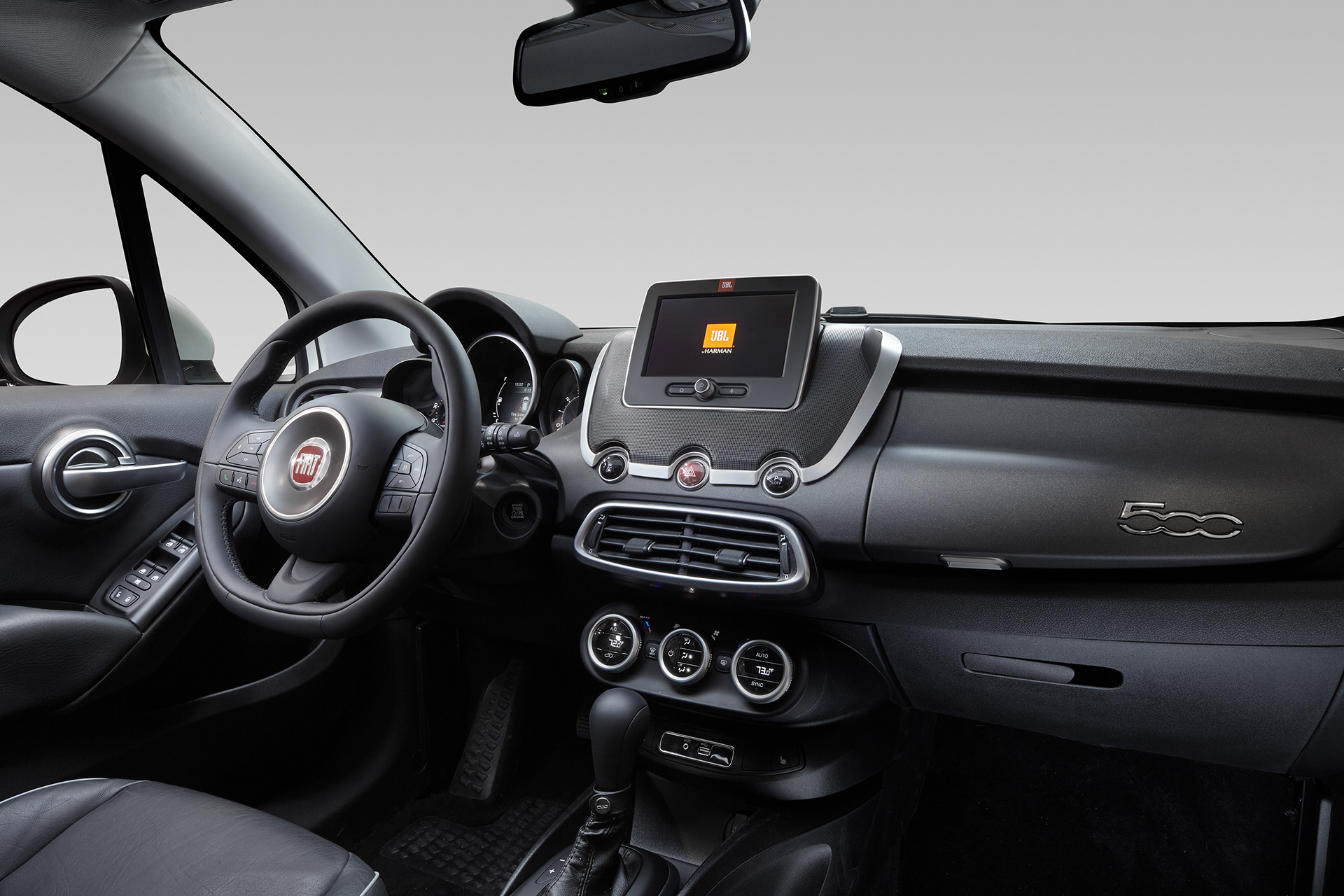
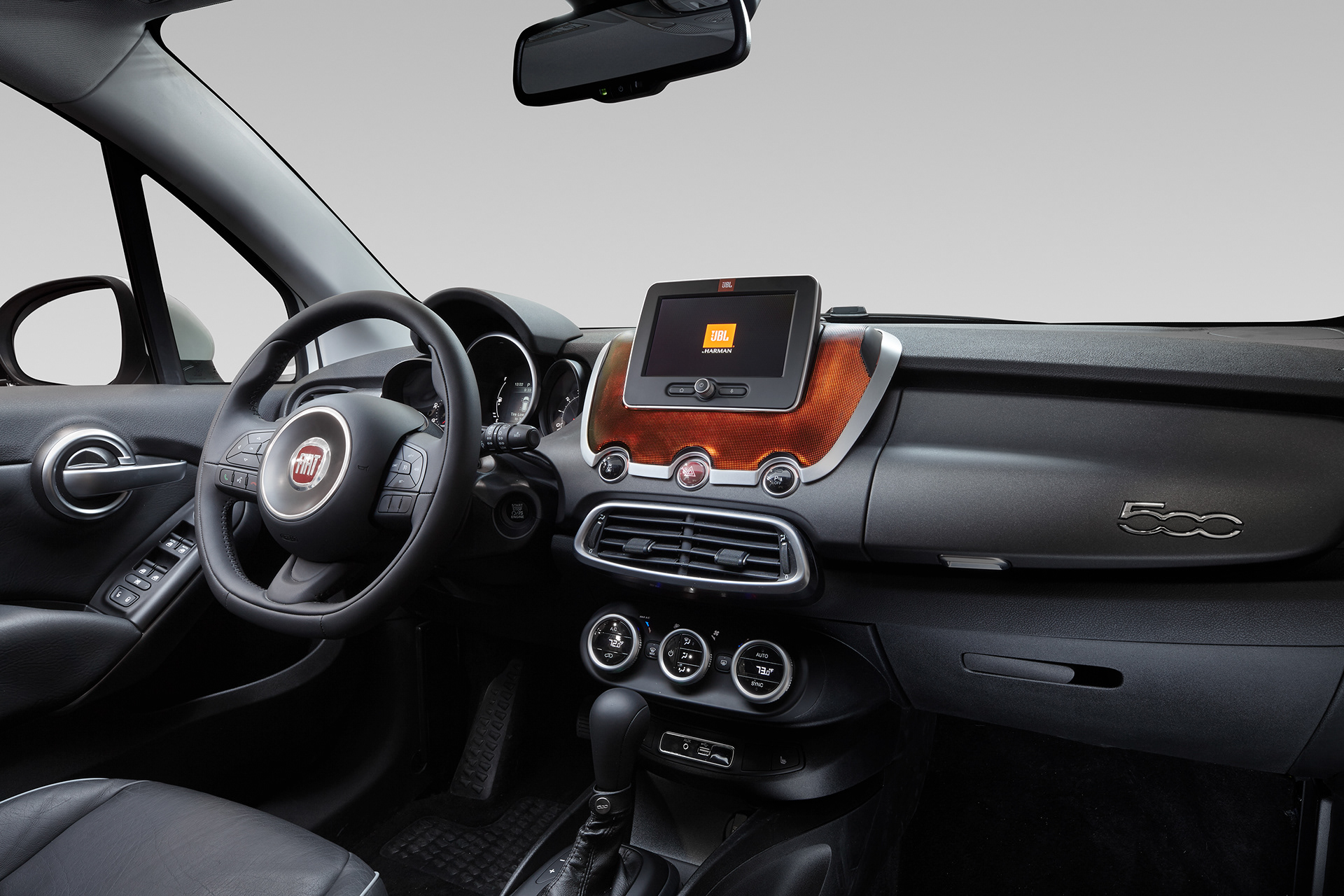
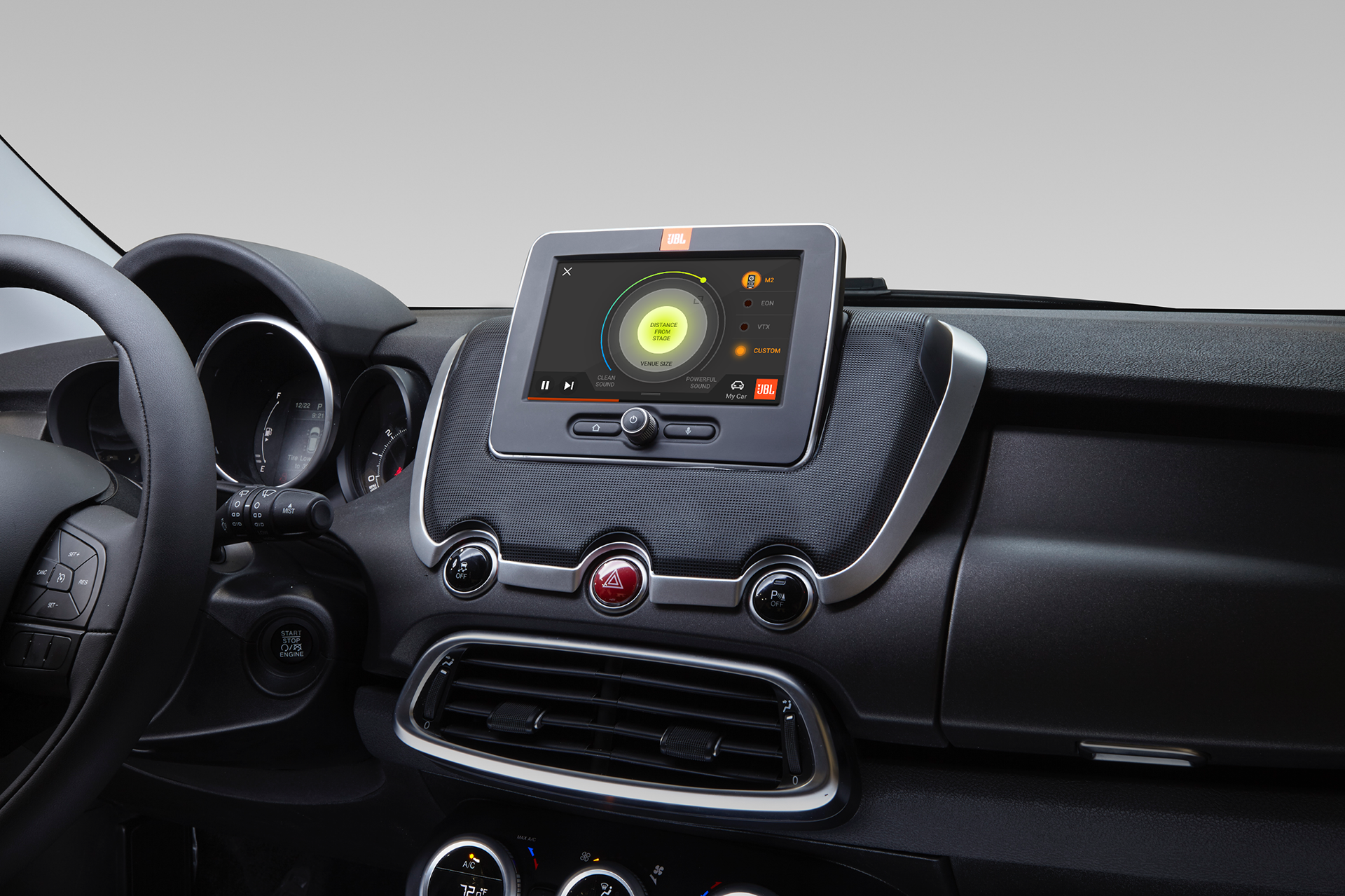
CES Las Vegas 2017
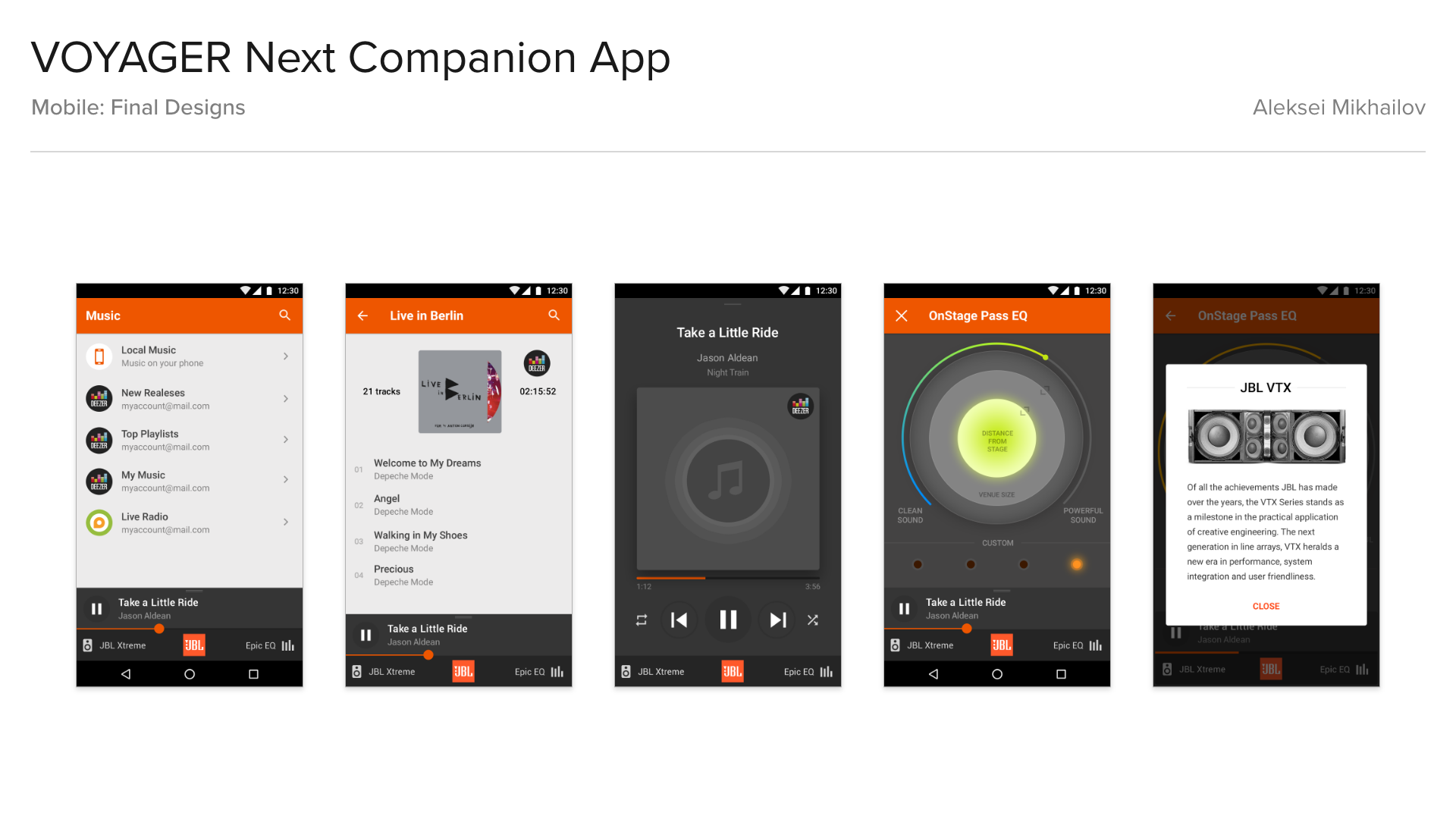
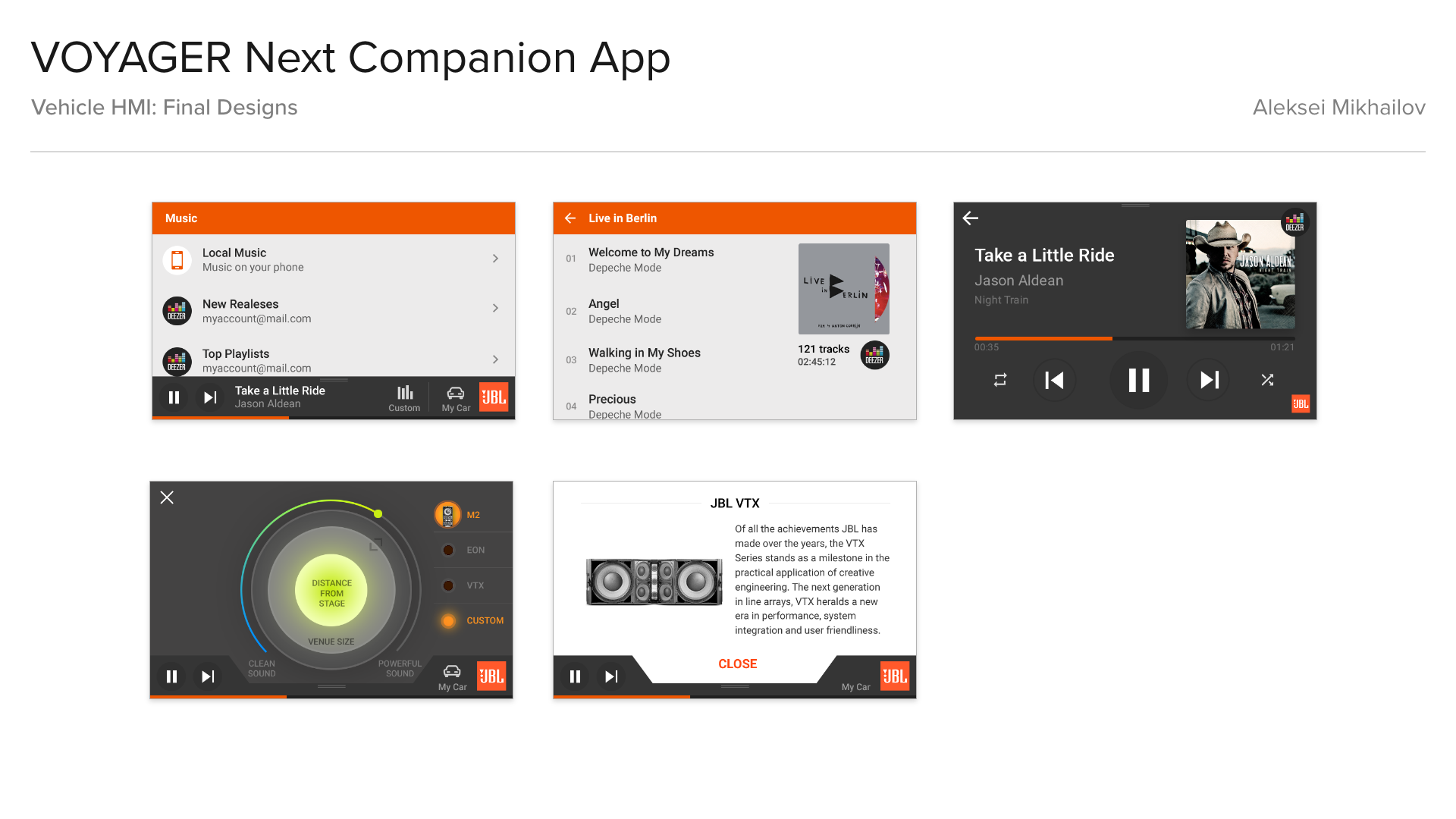
Final Designs
Goals
The main goal and the biggest challenge of the project was to create an entirely new way of changing sound settings and EQ parameters on the in-vehicle infotainment screen and a mobile app.
Process
I've started with UX research on the equalizer (EQ) parameters and other sound controls within the music apps and existing in-vehicle infotainment systems.
The research showed that most of the apps have some similar sound controls:
• EQ bands (60Hz, 230Hz, etc.);
• Bass;
• Virtualizer (Surround Sound).
Another UX design trends research showed that EQ bands controls do not make much sense for an average music app user.
Users who are not directly related to the music industry, in general, are not familiar with EQ bands, and the meaning of sound frequencies.
Users who are not directly related to the music industry, in general, are not familiar with EQ bands, and the meaning of sound frequencies.
Research on the EQ and Sound Customization Apps
Based on the performed UX research, and internal, proprietary HARMAN data, I've started sketching out some ideas on how to control the EQ bands and other parameters of the sound without showing the actual EQ bands and other controls, and how to make this process fun, simple and intuitive using the mobile app and in-vehicle infotainment system screen.
Initial Sketching
During the project, I've had numerous meetings with audio engineers and the development team to get an in-depth understanding of HARMAN's proprietary audio technologies, how DSP works, different speakers parameters to learn how to control and configure the sound.
In the end, I came up with an idea of two circles and sound power bar.
UI Animation
By simply changing the sizes of "Venue Size" and "Distance from Stage" circles and the sound power bar value, the user controls how the HARMAN Voyager Next DSP changes the EQ parameters and other sound parameters, and actually hear in realtime how the sound is changing.
Users can experience a feeling that they are hearing the music in an audio recording studio, with a clean and crisp sound, or that the user is on a concert, experiencing a live and powerful sound.
There are 3 predefined EQ presets representing HARMAN audio products and the sound they deliver (all through the using sophisticated DSPs presets), and 1 custom EQ preset that saves all the parameters changed by the user.
US Design Patent
This new UX design was patented in the US (US Patent D875106), and I was added in the list of the inventors, later the UX design was patented in the EU as well.
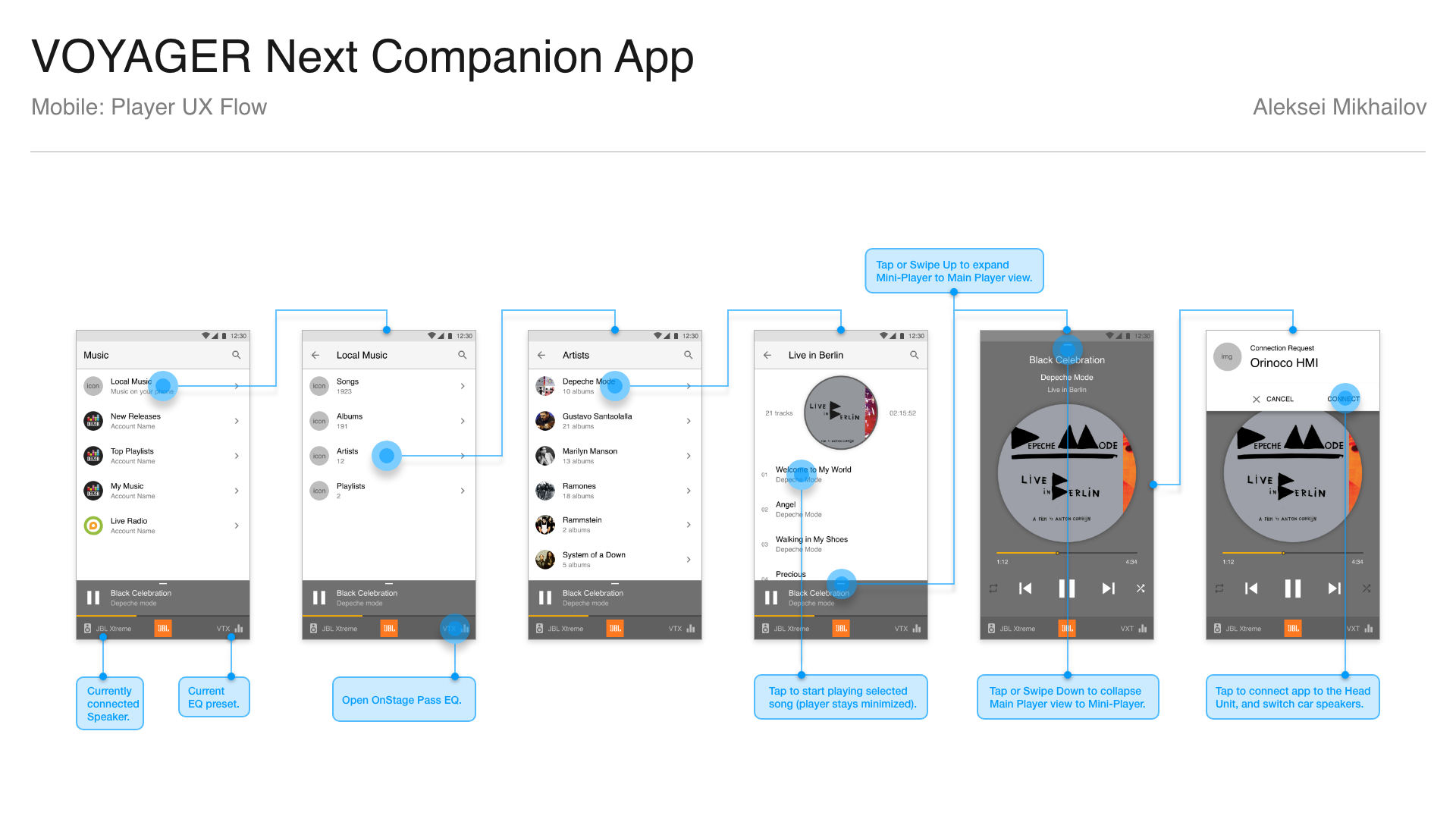
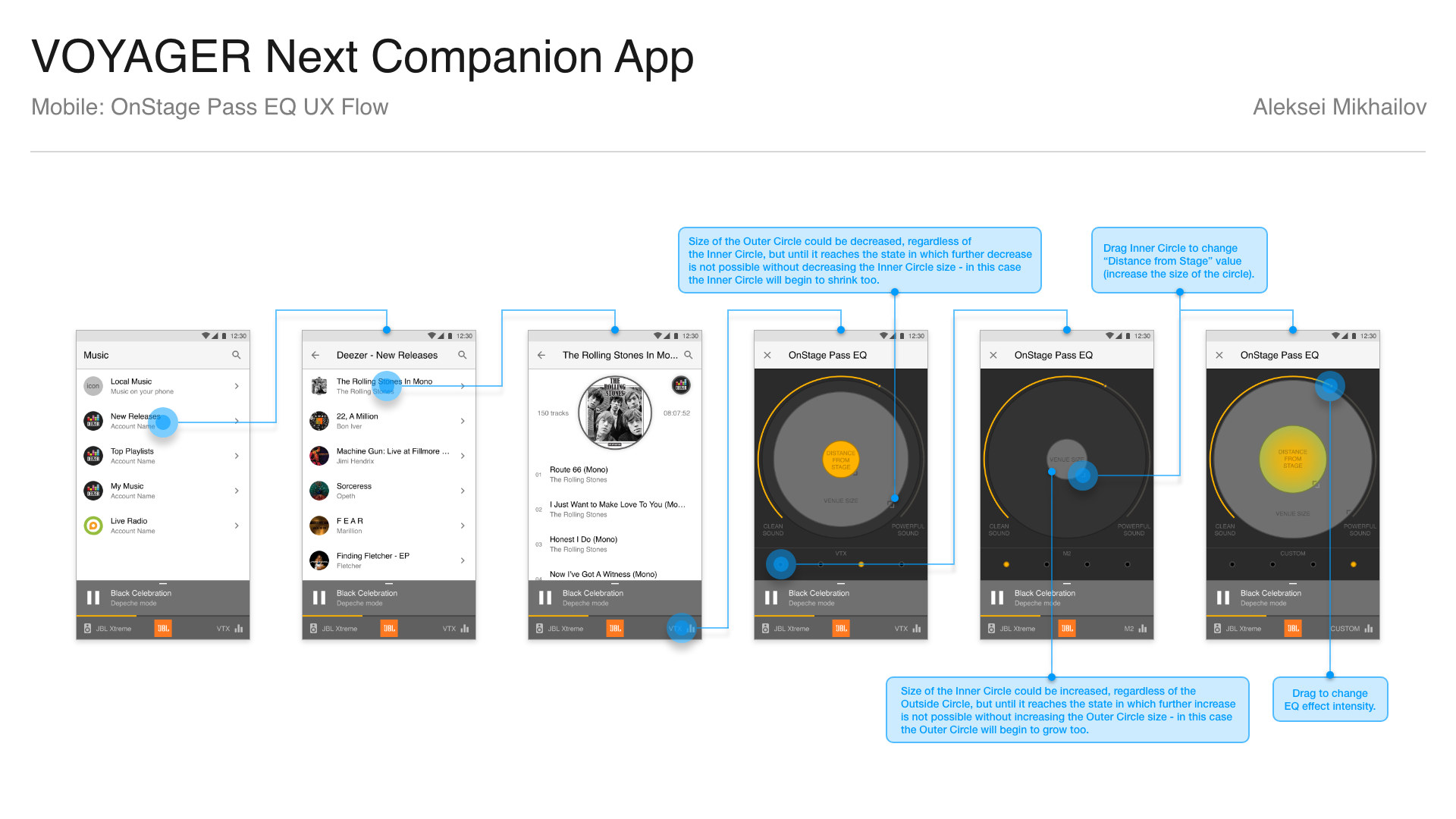
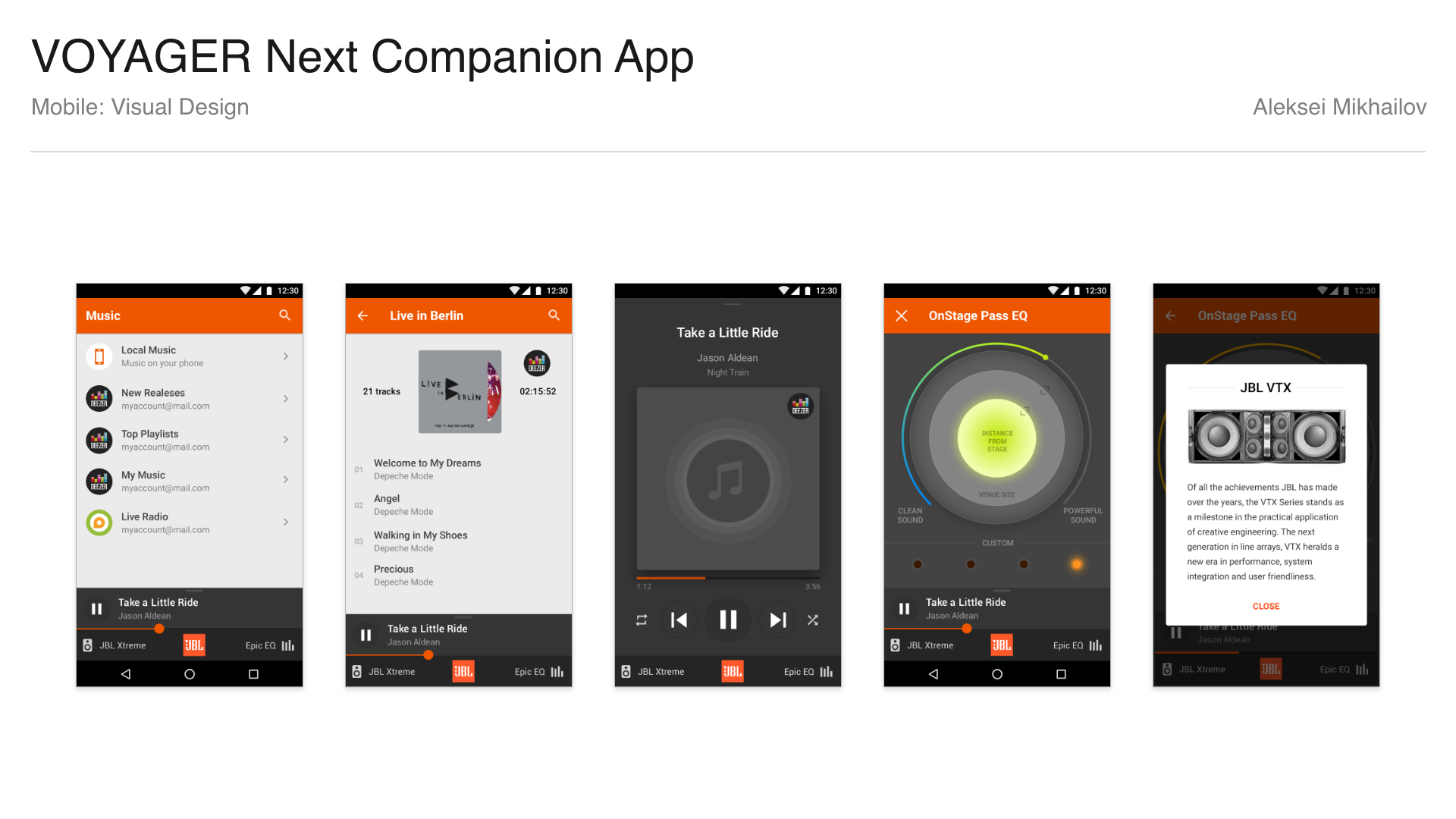
Mobile App UX Wireframes and Visual Design
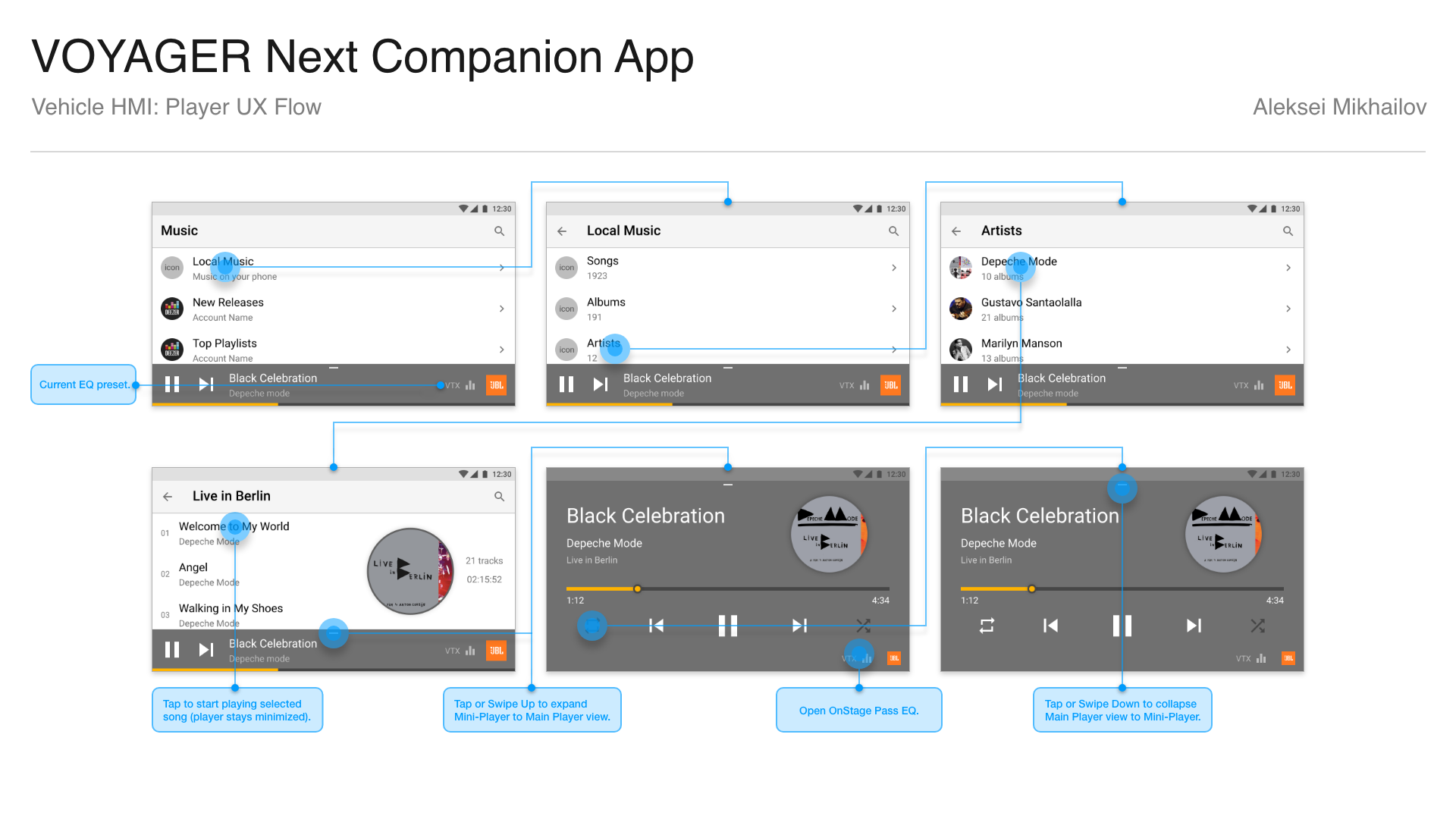
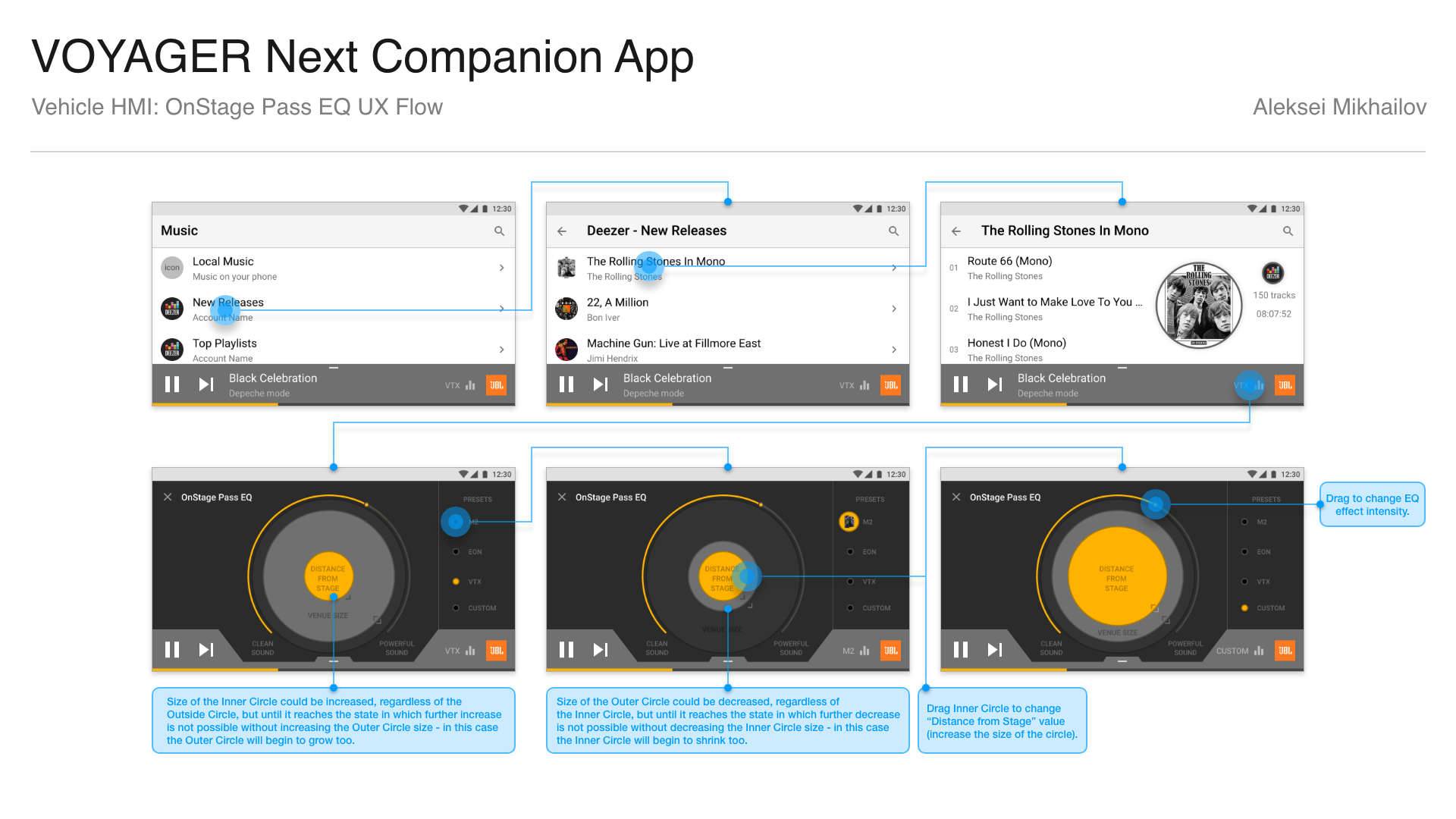
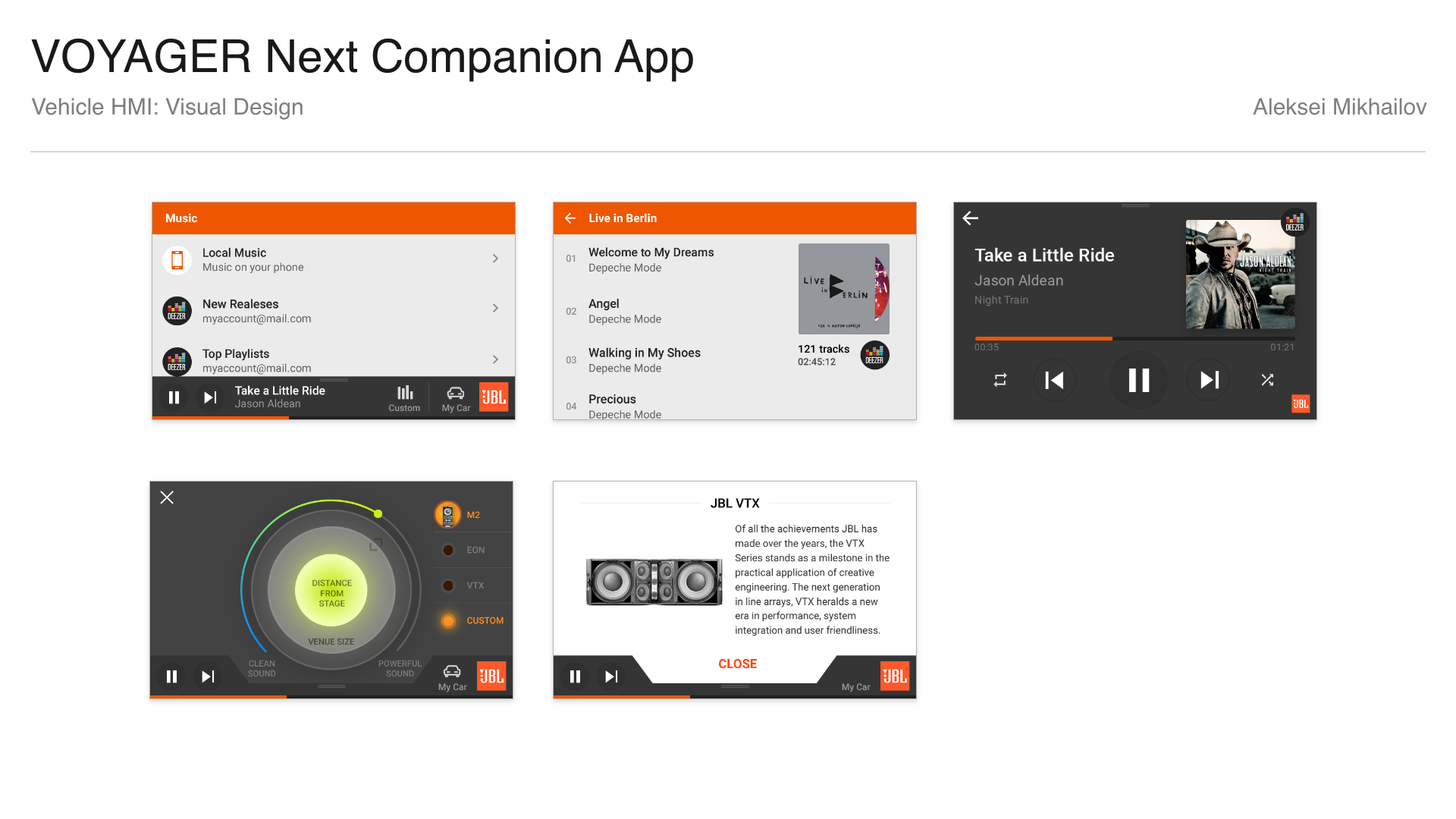
Vehicle IVI UX Wireframes and Visual Design
All screens, images, sketches, wireframes, visual designs, user experience designs, animations, industrial designs, 3D models, 3D model renders featured on this page are the intellectual property of the respective companies for which they were created. These works are showcased here for portfolio purposes only. All rights are reserved by the respective copyright owners. No part of this portfolio may be reproduced, distributed, or transmitted in any form or by any means, including photocopying, recording, or other electronic or mechanical methods, without the prior written permission of the copyright owner.